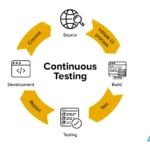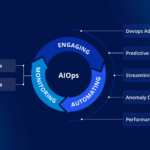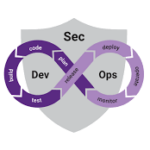
In today’s fast-paced software development landscape, reliability is paramount. As organizations shift towards cloud-native architectures, microservices, and distributed systems, ensuring system resilience becomes increasingly complex. This is where Chaos Engineering comes into play. By proactively introducing controlled failures, Chaos Engineering helps DevOps teams build robust systems that can withstand unexpected disruptions. But how does it integrate into modern DevOps, and why is it essential? Let’s explore.
Understanding Chaos Engineering
Chaos Engineering is a discipline that involves intentionally injecting failures into a system to test its ability to recover and maintain stability. It follows a scientific approach—hypothesizing about a system’s behavior, running controlled experiments, and analyzing the results to improve resilience. By simulating failures, organizations can identify weak points and enhance fault tolerance before real incidents occur.
Why DevOps Needs Chaos Engineering
DevOps thrives on automation, speed, and reliability. Continuous Integration and Continuous Deployment (CI/CD) pipelines ensure rapid software releases, but with speed comes risk. Traditional testing methods often fail to capture real-world failures, such as server crashes, network outages, or unexpected traffic spikes. Chaos Engineering integrates seamlessly into DevOps by:
- Improving System Resilience – Identifying vulnerabilities before they become critical failures.
- Enhancing Observability – Providing real-time insights into system behavior under stress.
- Reducing Incident Response Time – Helping teams respond faster to unexpected failures.
- Validating Auto-Scaling and Self-Healing Mechanisms – Ensuring cloud-native applications can dynamically adjust to failures.
Implementing Chaos Engineering in DevOps Pipelines
To effectively integrate Chaos Engineering, DevOps teams should follow a structured approach:
1. Define a Steady State
Before introducing failures, it’s crucial to establish normal system behavior. Metrics like latency, error rates, and response times serve as benchmarks to measure deviations.
2. Form a Hypothesis
DevOps teams should anticipate how a system would react to failures. For example, “If one microservice fails, will the overall application continue functioning?”
3. Introduce Controlled Failures
Using tools like Chaos Monkey (by Netflix), Gremlin, or LitmusChaos, teams can simulate disruptions like server failures, latency injections, or database outages in a controlled manner.
4. Monitor and Analyze
Observability is key. By leveraging logging, tracing, and monitoring tools like Prometheus, Grafana, and Datadog, teams can analyze system behavior and refine their infrastructure for better resilience.
5. Automate and Continuously Improve
Chaos experiments should be an ongoing process. Automating them within CI/CD pipelines ensures continuous validation of system reliability.
Real-World Applications of Chaos Engineering in DevOps
Many leading tech companies leverage Chaos Engineering to maintain high availability and reliability:
- Netflix uses Chaos Monkey to randomly terminate instances in production to test their resilience.
- Amazon implements failure injection testing to ensure AWS services remain stable under failures.
- Google applies controlled failure testing to improve the robustness of its cloud infrastructure.
Challenges in Adopting Chaos Engineering
Despite its benefits, organizations often face challenges in implementing Chaos Engineering:
- Cultural Resistance – Teams may be hesitant to introduce failures intentionally.
- Risk Management – Fear of causing outages in production environments.
- Lack of Expertise – Requires a deep understanding of system architecture and failure scenarios.
To overcome these challenges, organizations must foster a culture of resilience, start with small-scale experiments, and gradually expand testing to mission-critical services.
Conclusion
Chaos Engineering is no longer a luxury—it’s a necessity for modern DevOps teams striving for high availability, resilience, and reliability. By proactively testing failures, organizations can prevent downtime, enhance system performance, and deliver seamless user experiences. As DevOps continues to evolve, Chaos Engineering will play a pivotal role in ensuring software systems are not just fast, but also fault-tolerant.
Is your DevOps team ready to embrace the chaos? 🔥
Follow us for more Updates














